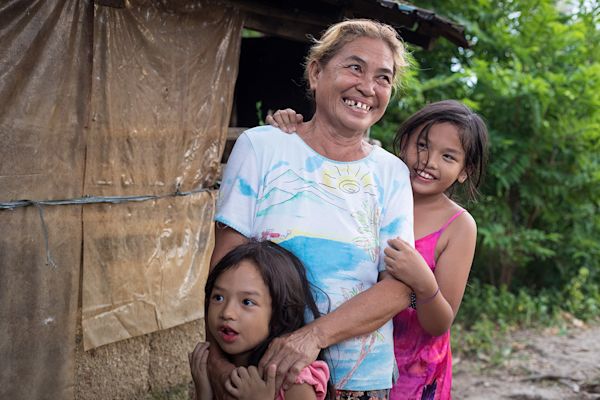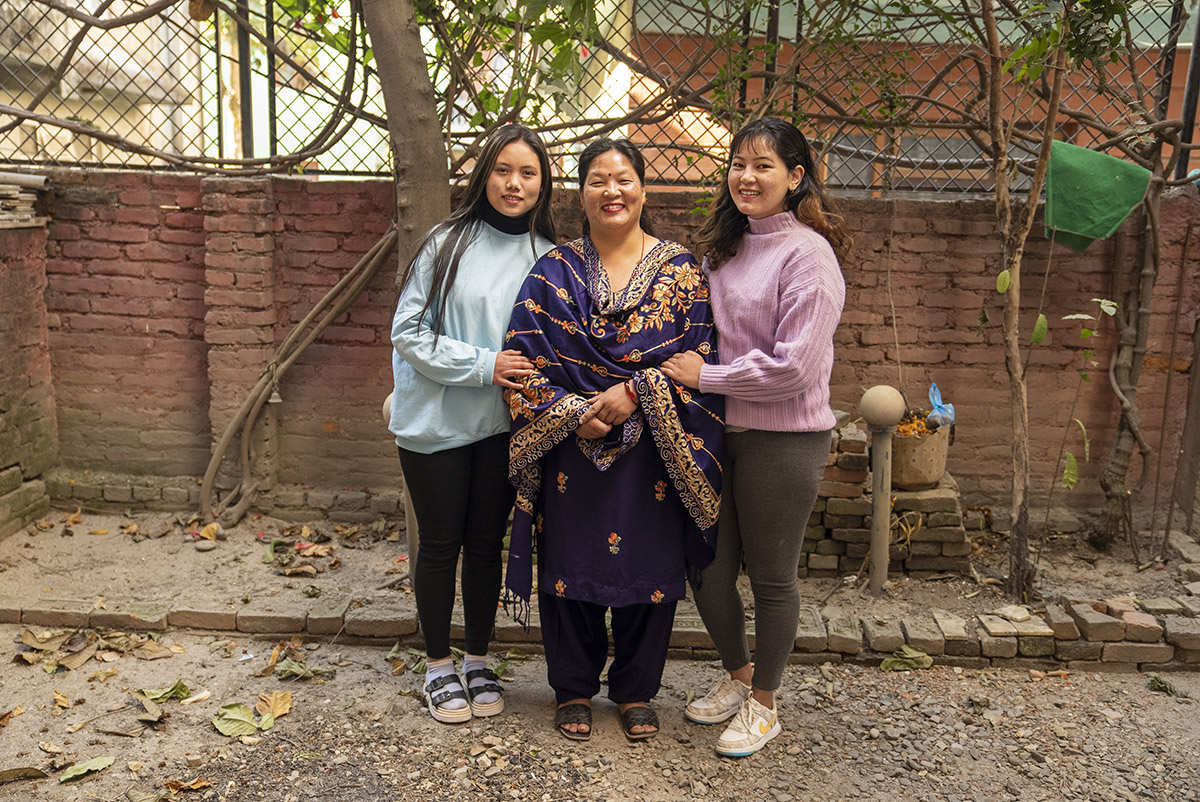Why gender equality is so important
March 8, 2022
Women and girls represent half of the world’s 7.9 billion-and-counting population—and therefore half of humankind’s economic potential, creative capabilities, and capacity for sustainable growth.
Every day we witness phenomenal contributions by women in business, science, governance, healthcare, and other important pillars of society, even as women of all economic backgrounds shoulder the bulk of domestic duties and child-rearing.
Yet globally, women still earn at least 20 percent less than their male counterparts and are far more likely to experience poverty. Only a quarter of parliamentary positions in the world’s governments are filled by women. Sexual and domestic violence affects a shocking 35 percent of women and girls worldwide. Studies in healthcare discrepancies show that women receive poorer outcomes than men, and clinical research trials contain less than a third of female participants.
There is still a long way to go to achieve a world where women have access to the same opportunities as men. But first, let’s celebrate the progress that humanity has made towards leveling the field in many arenas.
How has gender equality improved?
Politics
The United Nations Commission on Human Rights enacted voting rights for women into international law in 1948, and while women still make up less than 25 percent of global national parliamentary and leadership positions, that’s more than double what it was in 1995. In Rwanda, a 2003 mandate now ensures that at least 30 percent of parliamentary seats are occupied by women, and at the beginning of 2022, 14 countries had a woman holding the highest position of executive power, including Honduras’ Xiomara Castro.
Health
Women-specific health research is experiencing unparalleled expansion, and studies show that increased funding of women’s healthcare can have eye-poppingly exponential ROIs. Healthcare for women has also improved, especially in “fragile states'' where the risk of dying during childbirth is high due to poverty, lack of facilities, and outdated practices. Maternal mortality rates have dropped 60 percent in Southern Asia between 2000 and 2017 due to better hygienic practices and increased education. Similarly, sub-Saharan Africa—which accounted for two-thirds of maternal deaths in 2017—has seen a decline of 40 percent in the last two decades, according to the World Health Organization.
Child marriage
Maternal mortality and child marriage are inextricably linked as adolescent girls bear the highest risk of complications during childbirth, and one in five women have their first child before the age of 18. While the practice of “marrying” young girls to older men remains a scourge in many countries, the occurrence of girls who are married under the age of 15 has fallen from one in four to one in five worldwide. Of course, this number is still unacceptably high—and activists continue to introduce and enact bans on child marriage in developting and developed nations, including the U.S.
Education
One of the most effective ways to reduce child marriage and achieve gender equality is education, and the excellent news is that there are more girls in school at this moment in history than ever. Even in the least developed countries, girls and boys now have equal access to primary and secondary school education, with 78 million more girls in class than 25 years ago.
While the gap in gender widens when it comes to university-level education worldwide, more women are able to find a path to attend college, in the U.S., graduation rates for women have surpassed those of men, demonstrating that when it comes to gender, there is no difference in the potential for achievement.
“[It] is not a lack of skills that holds many people back, but a lack of opportunity,” says Kiran, a business student in Kathmandu who was able to fund her education through a loan from Kiva.
 Kiran from Nepal with her mother and sister.
Kiran from Nepal with her mother and sister.Business
Women have also found purchase in worldwide commerce, with an increase in business leadership positions from 15 percent to 26 percent from 2019 to 2021—and the number of female CEOs included in the Fortune 500 is at an all time high. More than 278 million women are involved in start-up businesses worldwide, and entrepreneurship among women is on the rise, especially in developing countries and low-income communities where women have often been blocked from borrowing capital to start new ventures.
The practice of microlending has been tantamount to building gender equity in business. More than 80 percent of microloans from Kiva go to women, allowing them to start their own ventures and invest in their families and communities.
“We live in modern times where women need to be independent and don’t sit at home just waiting for their husbands to provide the income,” says Francoise, the owner of a grocery store in Kigali, Rwanda that she founded with a Kiva microloan.
"Women can be as good entrepreneurs as men and it is up to us as well as to our husbands to provide a solid foundation for our children."
What still needs to be done to improve gender equality?
Despite this meaningful progress, important gender gaps remain. These vary in scale around the world and take many forms—from physical violence and deprivations to unequal opportunities in work or political life.
In places where gendered social norms, cultural traditions, and unfavorable legislation discriminate against women and girls, the gender equality gap presents even higher barriers to success—and often, simply survival. Women and girls are often excluded from education and commerce, limiting their opportunities to make a living and increasing their dependence. Millions are forced into child marriage every year. According to the World Bank, women in half of the world’s countries aren’t allowed to assert their rights to own property, even where laws are supposed to protect them. In many countries, women have to receive permission from their husbands or fathers just to get a job.
Even when traditional forms of capital to start businesses or further their education aren’t outright denied, often support can only be obtained through male relatives.
“In Nepal, there’s only micro-financing for women who are married,” says Kiran, the Nepalese college student. “But a lot of girls and women are like me. We don't want to get married, but we do want to study more.”
What’s so important about gender equality?
Apart from being the right thing to do when it comes to human rights, there are many other reasons why gender equality is better in the long-run—and not just for women.
Increasing the role of women in the economy is critical for economic resilience and growth, and is an important part of addressing economic crises around the world. Women’s economic participation has been found to speed up development, help overcome poverty and reduce economic inequalities, as well as improve children’s nutrition, health, and school attendance. In fact, maternal income and women's asset ownership has been shown to increase family nutrition 4-7 times more than the income of fathers. Additionally, a study in Brazil showed that the likelihood of a child’s survival increased by 20% when the mother controlled household income, and not the father.
How does gender equality affect society?
The inequity between men and women in society doesn’t simply affect individuals—it has far-reaching negative impacts on families, communities, and economies. Countries where women do not have access to education or agency over their own reproductive choices tend to be the poorest, costing those places up to US $30 trillion in lost productivity over a lifetime. Lack of protection against high maternal mortality rates, illiteracy, domestic and sexual violence, and property owndership disputes unnecessarily keeps nations in poverty.
Conversely, educating girls has proved to be a reliable economic driver of growth, and female entrepreneurship is a key factor in lifting communities out of poverty. In fact, a 2015 report found that if women participated in their local economies the same way that men do, the global GNP would increase by US $12 trillion.
Put simply, gender equality means prosperity—for everyone. And luckily, many of us are in a position to help.
How to promote gender equality
Microloans are a proven way to positively impact quality of life among women who borrow them, driving a cycle of increased innovation and economic growth. Many Kiva loans directly promote gender equality by empowering women to start their own businesses, fund their education, and build cooperative enterprises. Through our Field Partners, Kiva has facilitated over US $1.23 billion in loans to women all over the world, thanks to people just like you.
For as little as $25 or $5 a month, you can fund a loan to one of hundreds of women entrepreneurs and students seeking to access opportunities to improve their lives and their communities. When one loan is repaid, you can reinvest your return towards another loan—maximizing your impact on gender equality, one woman at a time.
When we see the impact of Kiva loans on individuals like Francoise in Rwanda and Kiran in Nepal, we know there is hope for a future where women are given more opportunities to succeed.
We’ll leave you with a quote from Francoise, who says, “The time for women is now. Go out there and seize the opportunities in front of you.”
PREVIOUS ARTICLE
Going beyond gendered social norms in Nepal →NEXT ARTICLE
She had the will: All Thacienne needed was the way →













